
Threat from the air
Participants in the search of the Dyatlov group: "We witnessed a strange celestial phenomenon"
April 29, 2024. All rights reserved Komsomolskaya Pravda. Authors Nikolay Varsegov and Natalya Varsegova
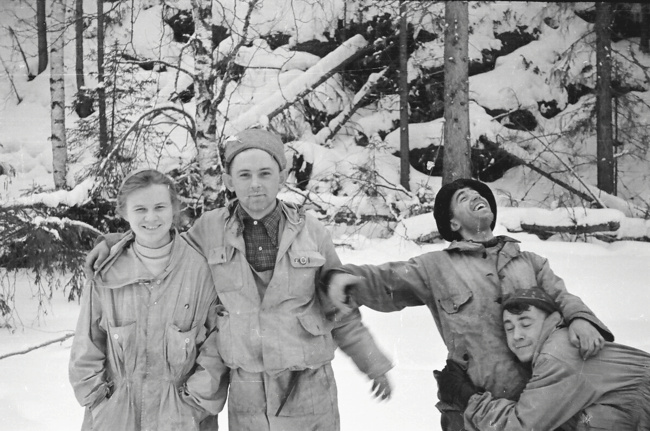
It is still unclear why the guys ran away from the tent into the bitter cold and to their death.
Komsomolskaya Pravda journalists interviewed two participants in the search for the hikers who disappeared in the Ural mountains in 1959, and found out unexpected details of the tragedy.
This tragedy has haunted researchers for more than half a century. In the winter of 1959, nine hikers disappeared in the Northern Urals. In 16 days, the participants of the trip had to ski in the north of the Sverdlovsk region more than 300 km and climb two peaks of the Northern Urals. The hike belonged to the third (highest) category of difficulty.
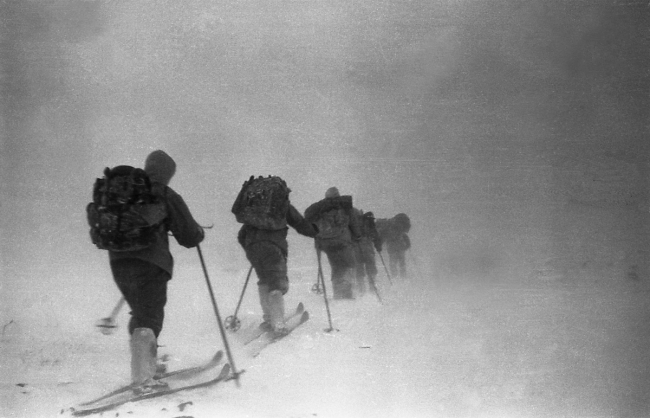
The hike belonged to the third (highest) category of difficulty.
Participants of the hike: Yuri Krivonischenko, Yuri Doroshenko, Rustem Slobodin, Zinaida Kolmogorova, Lyudmila Dubinina, Aleksander Kolevatov, Nikolay Thibeaux-Brignolle, Semyon Zolotaryov and Igor Dyatlov (group leader, fifth-year student at the Ural Polytechnic Institute).
A month later, rescuers found an empty tent... And within a radius of one and a half kilometers from it there were five frozen bodies. The bodies of the rest were found only in May. Almost all the hikers were barefoot and half naked. Some suffered fatal injuries. According to investigators, the hikers died on the night of February 1-2. Hundreds of people took part in the search for the Dyatlov group, trying to unravel the mystery of their death... But it is still unclear why the guys ran away from the tent into the severe frost and to their death.
- 2 -
Of those who participated in the search for the Dyatlov group, only a few are still alive. For the first time, we gathered Sergey Sogrin (87 years old) and Vladislav Karelin (92 years old) face to face in order to get, let’s say, the most complete picture of what happened.
Both Sergey Sogrin (SS) and Vladislav Karelin (VK) were students at the Ural Polytechnic Institute in 1959. Both are experienced mountaineers who were about to receive the title of Master of sports. Both in January of 1959 led expeditions in the Subpolar and Northern Urals.

Vladislav Karelin and Sergey Sogrin were students at the Ural Polytechnic Institute in 1959. Photo Aleksey Bulatov
How did you find out about the tragedy?
SS: On January 23, three groups from UPI went hiking. Two - under the leadership of Dyatlov and Blinov - to the Northern Urals. My group was in the Subpolar Urals. Dyatlov’s route was shorter, but when we returned, our common comrade Rudik Sedov suddenly came running to me and said: "There is panic at the institute, Igor’s group didn't come back. The search begins, they don’t know what to do or where to start. They ask you to come."
VK: I learned about the disappearance of the Dyatlov group on February 25 in the city of Serov (Sverdlovsk region). Our route passed a little south of the Dyatlov group's. On the way back we had a transfer in Serov. In the dining room, a stranger approached us and asked, "Are you the ones they looking for?" We knew that it was definitely not us; there were still two days left before our deadline. We called the Sverdlovsk Committee of Physical Education and Sports from the post office, where they told us that a search was underway for Igor Dyatlov’s group. And they ordered us to go to Ivdel (this is the last city from where the Dyatlov group set out on the route, the search headquarters was there - ed.). On February 26 we arrived in Ivdel.
What were your first thoughts?
SS: We didn't think anything tragic had happened. Perhaps one of the guys broke a leg or got sick. To drag an injured comrade out of the taiga through deep snow is hellish work, so we believed that Dyatlov was holed up in the taiga and was waiting for help.
VK: There weren't even any disturbing thoughts. We decided that we would arrive to Ivdel and it all will become clear.
You both took part in the search…
SS: The search tactics were as follows. The Dyatlov route is a 300 km circular route. We had no idea where to look for the group. Therefore, knowing that Igor had to visit specific areas and that traces of hikers might remain there, it was planned to drop 3-4 groups by helicopter to different points of their route. In particular, to the peaks, where hikers groups usually leave notes about their ascend (such notes were packed in tin cans and covered with stones stones - ed.). Me, Moisey Akselrod almost a Master of sports at that time, and climber of the 2nd sports category Stas Tipikin, were dropped off near Mt Otorten.
VK: When we arrived in Ivdel in the evening, we met with the head of the search, Evgeniy Maslennikov. He showed the a plan where and which groups would be sent. The next morning, he and I flew around the entire area by plane. I note that even when we flew low, we couldn't see anything on the ground. No small details, especially a snow-covered tent or dead people. Therefore, the flyby did not yield anything.
SS: The next day we climbed to the top, but the only thing we found was a note from the summer hike of a group of Muscovites. It became clear that Dyatlov’s group did not reach Otorten. When we were descending, a helicopter flew by and dropped a canister with the text that a tent was discovered on the slope of mountain 1079, prepare to evacuate.
VK: Suddenly, on the evening of February 26, a radiogram arrived, a tent had been found. The next morning, our team took the first helicopter to the area of Mt Kholat Syakhl. While we were flying, my thoughts were sad. An empty tent did not bode well. And when we arrived and dissembarked, I was literally crushed. I still remember how searchers Sharavin and Koptelov approached us and, without even saying hello, they were dumbfounded: "Do you see the top of the cedar sticking out? There are two people lying under this cedar tree." I was gripped by incredible fear.
SS: We arrived at the pass on March 1st. Under the outlier rock lay two bags with corpses. I had no feeling of fear. There was only deep sadness.
- 3 -
What theories did you discussed?
SS: There were different assumptions, but everyone unanimously dismissed the avalanche. There were climbers among us; no one saw any signs or conditions for the formation of an avalanche (weather, wind, underlying layer of snow). Moreover, at the site of the tent I made a vertical cut of the snow and realized that there could be no avalanche or snowfall there. I'll explain why. As a result of the wind blowing, the top layer of snow becomes quite dense. Due to the temperature difference between the top layer of snow and the soil, an ablation process occurs. That is, the transition of snow from a solid to a gaseous state. These vapors turn into ice crystals. The volume of snow decreases and the upper dense layer seems to hang in the air. If an animal runs through this crust or a person passes, the snow mass sags and, as if on ball bearings, begins to roll down the slope. There was none of this. In addition, about 20 of us gathered near the tent. And if we were standing on a snowy board, we would have left with it, but we were standing on hard crust.
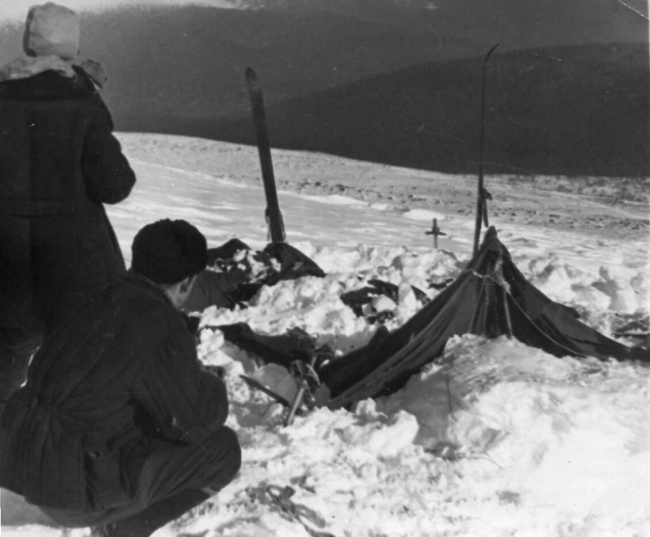
The tent was disturbed several times before the arrival of investigators.
What was wrong with the tent?
VK: The description of the tent in a criminal case is not very accurate. The fact is that the tent was disturbed several times before the arrival of investigators. Having found the tent, Slobtsov and Sharavin immediately rushed inside, cutting through the crusted snow with an ice ax. A day later, two more people from our team went to the tent, even took out the skis from under. And I would never pitch a tent in this place. A very unsuitable place to spend the night.
SS: I disagree. Many researchers scold Dyatlov for not going down to spend the night. But what was the point? Climb the pass, descend back into the forest and then climb again? All he would do is walk up and down. Considering that they would have hiked on bare rocks and snow crust, even without skis, they would have time to reach the top and return back in daylight.
How were the bodies found?
VK: Doroshenko and Krivonischenko were found by student searchers, Dyatlov, covered with snow, was found by Mansi (representatives of the local people - ed.). Later on the same day, it was reported that Zina Kolmogorova was found under a layer of snow of 30-40 cm. The dog smelled it.
SS: I will never forget the feeling of this discovery. Zina was the favorite of the tour section, all the boys were in love with her, including me. Two or three weeks before our hike, Zina was going to go with us; she really wanted to hike the Subpolar Urals. But later she switched to Dyatlov, since his route was shorter in time, and it was more convenient for her. There, at the pass, I constantly thought: "Why didn’t you come with us, you would have stayed alive..." This bitterness of loss I carry with me all my life.
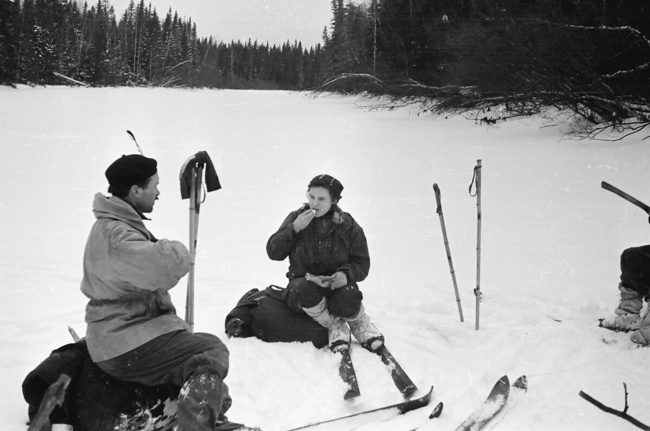
Zina Kolmogorova was the tour section's sweetheart.
VK: After Zina was found, the search became more thorough. We lined up and walked abreast, piercing the snow with metal probes until the hit ground. Step by step. On March 5, I found Rustem Slobodin. I poked into the snow, but the probe stopped at something. I tried again and again, and it didn’t go through. We started digging with our hands. That's how we found him. He was identified right away by hiker Stas Tipikin. It was then that it became clear that if five were lying under the snow, then the rest were somewhere nearby.
- 4 -
Was there anything strange during the search?
VK: The fact that the hikers for some incredible reason jumped out of the tent. However, we understood that they could not go far.
SS: There was a unanimous opinion that something supernatural forced the group to leave the tent, cutting its sides. Investigator Ivanov even said then that the threat came from the air. But what kind of threat remains unclear.
VK: By that time, we ourselves had witnessed a very strange phenomenon. When we were on a hike, on the morning of February 17, I heard a cry: "Guys, look!" I jumped outside into what I was sleeping in, and saw a big bright spot in the sky. It grew. A small star appeared in the center of it, which also began to grow. This spot moved from southwest to northeast and seemed to fall to the ground. Then it disappeared behind the forest, leaving a light streak in the sky. It was impressive. It seemed as if the earth would explode from a collision with some planet. When we were talking about this incident during the search, Evgeniy Maslennikov became interested and sent a radiogram to headquarters asking were there any of the latest meteorological rockets launched on the approximate date of the death of the Dyatlov group, February 2?
SS: I also saw something similar. A big star rose higher and higher above the forest. It was very bright, then began to turn yellow, increasing in size. And then it turned into a ball the size of a lunar disk. This ball began to move straight towards us; it felt like it was floating right above the forest. And this scared us very much. Only years later did I realize that we were watching a rocket launch from Baikonur.
VK: I disagree. From Baikonur were launched either space or ballistic rockets, the engines of which operated for 6 minutes. And you observed your phenomenon for about 20 minutes. In addition, your radiogram recorded that the object was flying horizontally low over the forest. This means that it was not Baikonur, but some other training ground, closer to the pass.
What did you know about Zolotaryov?
A few words from the authors. 37-year-old Semyon Zolotaryov was the most controversial participant in the trek. Firstly, he joined the group a couple of days before the trip. Secondly, he introduced himself as Sasha, although according to his passport he was Semyon. Thirdly, he came to the Urals from the Caucasus and did not know the Ural mountains. Fourthly, taking a stranger on a difficult route was against sports tourism rules, but for some reason they still took him.
SS: I’ll start from afar about getting to know Semyon. The Great Patriotic War showed that our soldiers were not ready to conduct combat operations in extreme mountain conditions. During the German capture of the Caucasus, many of our soldiers died in avalanches, crevices, and fell off cliffs. Therefore, after the war, hiking centers and mountaineering camps were created throughout the country so that those interested could come there and undergo basic training. Instructors were needed to work at these camp sites. The common practice was the instructor to enter into an agreement with a hiking center or mountaineering camp for a season or two, then leaves to work at another base. For example, from the Caucasus to Altai. Semyon Zolotaryov worked like this in many places. In 1958 he moved to the Urals to the Kourovskaya camp site. To improve his skills, he needed higher category trips so he could get a Master of sports and subsequently even run a hiking center. It was easy to find out that the hiking section of the UPI is preparing such routes. One day he was advised to contact me, while I was preparing to go to the Subpolar Urals. He made a good impression, sociable, athletic. We all agreed that he would not be a burden on our expedition. Later he transfered to Dyatlov’s group, since the duration of that group’s trek was shorter.
VK: In 1957, I went with a group to the Western Sayan Mountains. We had to cross Lake Teletskoye. There, at the local hiking center, there was Zolotaryov who told us that there was a boat that we could use to cross to the other side. It’s interesting that I remembered this incident recently, when I was discussing Semyon’s personality with someone in a conversation.
Will anyone ever know what happened?
SS: After lengthy investigations, it became clear to me that it was useless to bang my head against the wall. We will never know anything. I adhere to the man-made dissaster (unsuccessful missile tests - ed.), if only because the corpses we discovered were lying in a dynamic pose. This means the cause of death is not freezing. In addition, investigator Lev Ivanov himself admitted decades later that he could not tell the truth and apologized to the relatives of the victims.
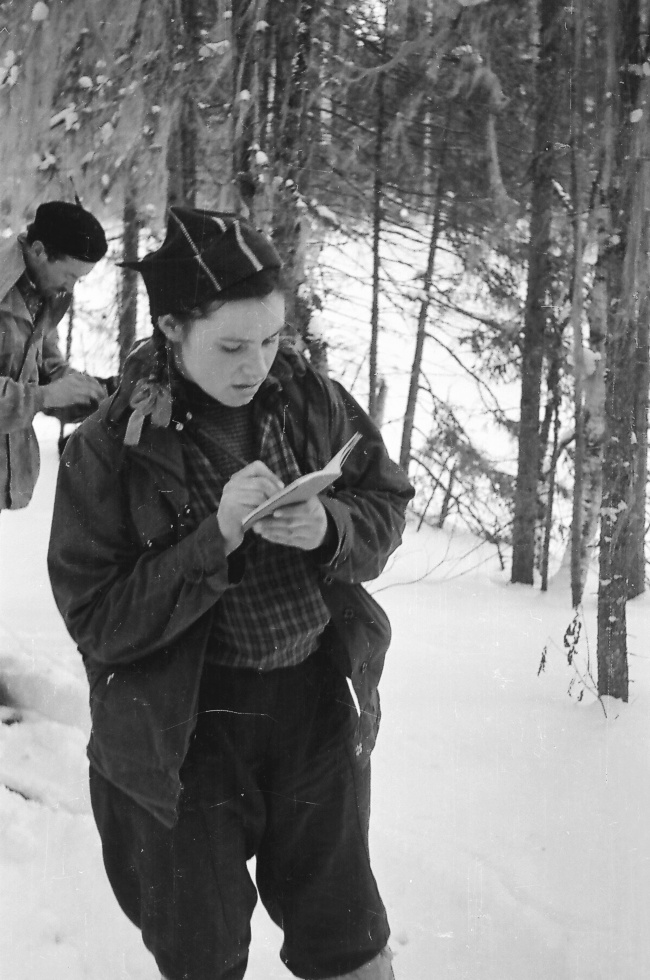
Investigator Lev Ivanov admitted decades later that he could not tell the truth and apologized to the relatives of the victims.
VK: It's difficult to answer this question. On the one hand, many years have passed, but things are still there. On the other hand, I really want to hope that the truth will be known. And for this you need to make the most active efforts and not abandon this topic.
- 5 -
From the authors
It happens that we, the authors, even remember events a month ago, which we both witnessed, in different ways. Someone perfectly remembered something that the other did not pay attention to. That’s why the memories of searchers—joint memories—are especially valuable.
In this case, we were surprised by a fact that we had not previously paid attention to. This is a flight of luminous balls. It seemed that there was nothing to be surprised there - ordinary ballistic missiles were flying from Kazakh rocket launch sites. But we read the arguments of Vladimir Karelin - a specialist, by the way, in rocket technology. Here he says: "...ballistic missiles whose engines work for 6 minutes. And you observed your phenomenon for about 20 minutes. In addition, your radiogram recorded that the object was flying horizontally low over the forest. This means that it was not Baikonur, but another training ground, closer to the pass."
And that's true: it turns out that the launches were not from Kazakhstan, but from a much closer distance. But from where?! And the missiles were not ballistic, but what kind?! Similar to the current winged ones?
Therefore, the solution to the mystery of fireballs, previously explained to us by the launch of ballistic missiles, is now somehow becoming doubtful. And requires further study.
From Vladimir Mihaylovich Askinadzi
How many similar opuses and memoirs, reflections and versions have I read!! And all these "works" have something in common - a reluctance to use their brains!! Fireballs struck the brains of not only Sergei and Vladislav, but also the overwhelming number of "researchers". At that time, this was a version in which many people believed unconditionally, apparently not without the intervention of the prosecutor's office and Ivanov personally.
But, if you, fellow "researchers", witnessed the flight of these balls for yourself, even determined the direction of their trajectory, why didn't you cut your tent in a panic, why didn't you run barely clad but calmly went back to your bed and dreams? Are you saying that the Dyatlov group were less prepared, or more cowardly than you? Why, having determined the direction of the flight (southwest, northeast), you didn't scratch off Baikonur? Take a map and see where is Otorten and where is Baikonur. And if, as Vladislav claims, the safety distance was determined at 6 minutes (determined by the Chief Designer of the product!), after which a signal was given for the self-destruction of the product, not a single rocket launched from Baikonur should have reached Otorten, there is no time, and it is not on the way! Baikonur was built to launch large, intercontinental rockets with a finish line in Kamchatka, so Otorten was not on their way! Guys, use your brains! Yes, the accident is a consequence of the passage of missiles, but which ones? Maybe missile defense systems (for example, Makeev's solid-fuel missiles?) launched from mobile launchers? At that time, U-2 aircraft flew freely over the territory of the USSR. There was no means to bring them down them. And only on May 1, 1960, it was possible to shoot down Powers with a missile from the missile defense system. Since then, the Americans have calmed down, switched to balloons, and then to satellites.
But even if we discard all this scientific stuff and isolate only the fact of the fireballs, is such a phenomenon capable of frightening nine adult, physically strong young people to death? I would like to get an answer from those who were eyewitnesses.
But this is only half the problem! How did they get such injuries? Everyone has their own, not a single common injury. Fireballs, avalanche, etc., etc....?? I would like to get a response from those who personally observed them. Guys, there are very few of us, participants in the search, left. Let's help to the best of our knowledge, including professional knowledge, and not further confuse this hopelessly complicated matter.
The Varsegovs are right that, being simultaneously witnesses to the same phenomenon, they later remembered it differently (in small things). We, searchers, were in the same conditions, one remembers something, but another does not remember it, a third remembers this fact, but in his own way, etc. An example of this is the notebook in the hands of a la Zolotaryov. Even Ivanov admitted that he does not remember this. Find the act of destroying the Dyatlov group's documents by Tempalov and Maslennikov, discarded as "not important for further investigation". Although I agree that this is a very insignificant document that does not convey any information.
Full Moon Service, photo chosen by Vladimir Askinadzi himself.
You can discuss this topic on Dyatlov Pass Forum.










